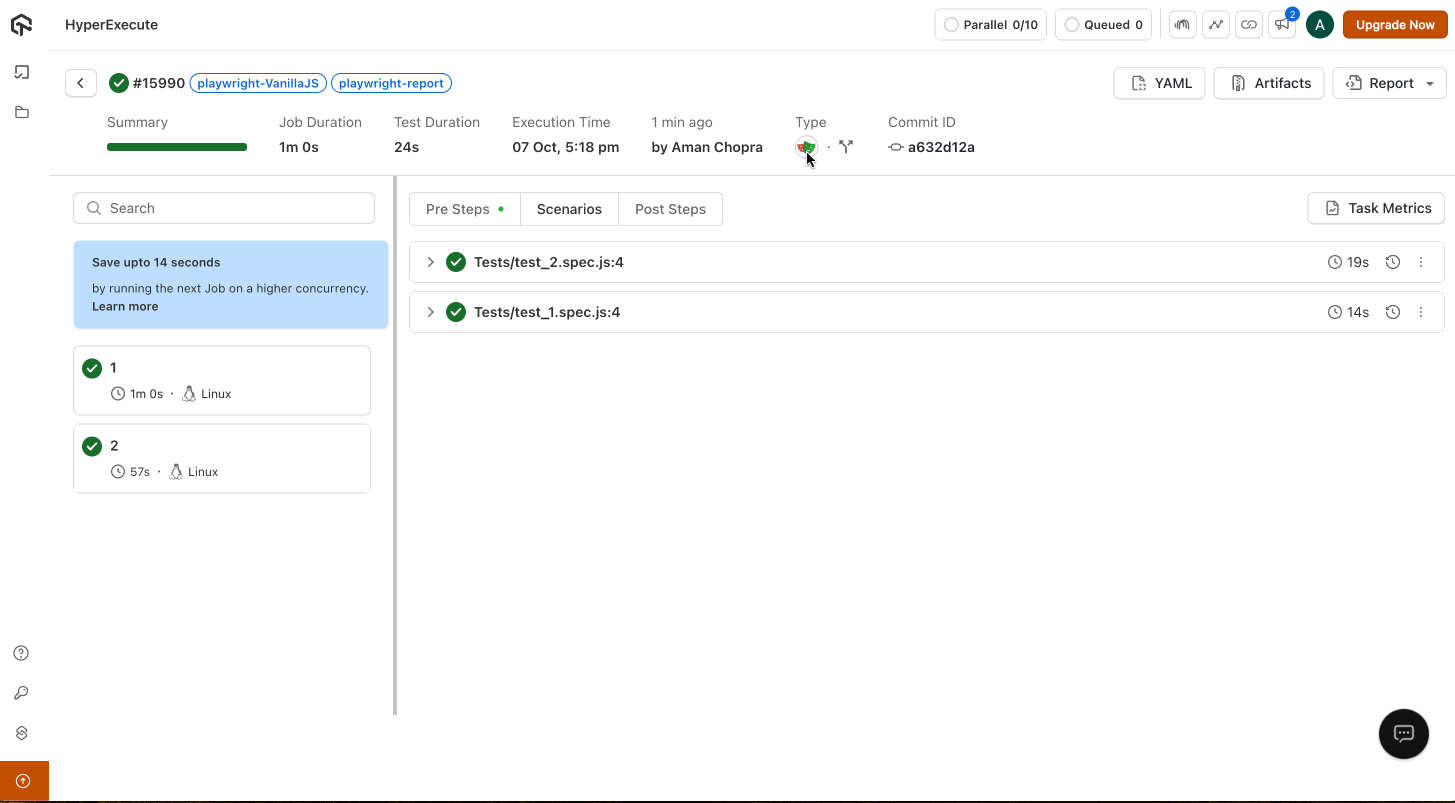Consolidated Playwright HTML Report
Playwright offers built-in HTML reports to help visualize the results of your test runs. These reports are detailed, user-friendly, and interactive, allowing you to analyze each test's status, logs, and errors in an organized manner.
Steps to Generate Consolidated HTML Report
Follow these steps to generate a consolidated Playwright HTML report:
Step 1: Update Your Playwright Configuration
In your Playwright configuration file playwright.config.js, add the following code to enable the reporter:
import { devices } from '@playwright/test';
const config = {
...//
reporter: [['html', { open: 'never' }]],
...//
};
-
In the case of HyperExecute, we always have to set the value of
open: never. -
By default, the report is written into the playwright-report folder in the current working directory. The same location can be used in the report parameters in the YAML file.
Step 2: Configure the HyperExecute YAML File
In your HyperExecute YAML configuration, define the report parameters like this:
report: true
partialReports:
frameworkName: playwright
location: playwright-report
type: html
Step 3: Execute Your Tests
Run your Playwright tests on HyperExecute using the CLI. After your job completes, you can visit the HyperExecute dashboard to download and view the consolidated Plywright HTML report.

